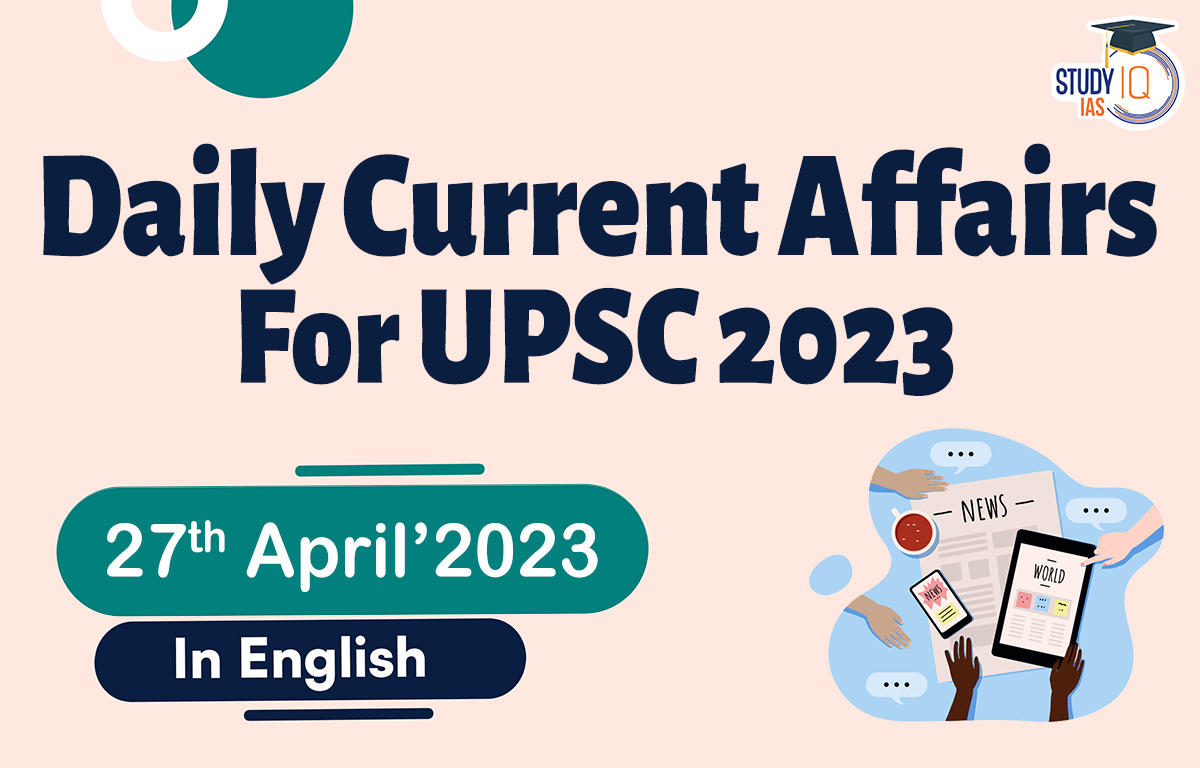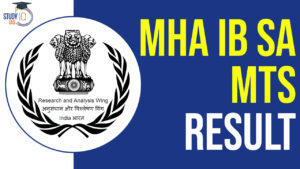Daily Current Affairs for UPSC 2023
Q) Which one of the following statement is not correct about Autonomous District Councils?
- They are mentioned in the Sixth Schedule of the Indian Constitution.
- Most of these councils are located in states in north-east India.
- The areas of these councils can be increased by the president.
- These councils have the power to form courts.
Daily Current Affairs for UPSC – 26 April 2023
Explanation:
- Option (1) and (2) are correct: The Sixth Schedule of the Constitution of India allows for the formation of autonomous administrative councils in accordance with Article 244. Most of these autonomous district councils are located in North East India but two are in Ladakh, a region administered as a union territory. Presently, 10 Autonomous Councils in Assam, Meghalaya, Mizoram and Tripura are formed by virtue of the Sixth Schedule with the rest being formed as a result of other legislation.
- Option (3) is incorrect: The Governor is empowered to increase or decrease the areas or change the names of the autonomous districts. While executive powers of the Union extend in Scheduled areas with respect to their administration in 5th schedule, the 6thschedule areas remain within executive authority of the state. The acts of Parliament or the state legislature do not apply to autonomous districts and autonomous regions or apply with specified modifications and exceptions.
- Option (4) is correct: Autonomous district councils have powers to form courts to hear cases where both parties are members of Scheduled Tribes and the maximum sentence is less than 5 years in prison. However, the jurisdiction of these councils is subject to the jurisdiction of the concerned High Court. Autonomous district councils have powers to levy taxes, fees and tolls on: building and land, animals, vehicles, boats, entry of goods into the area, roads, ferries, bridges, employment and income and general taxes for the maintenance of schools and roads.
Q) With reference to Virtual Digital Assets (VDAs), consider the following statements:
- In India, there is no regulation in place right now that specifically defines VDAs.
- The Union Budget of 2022–2023 imposed a 30 percent tax on the income generated from VDAs.
- The Enforcement Directorate has the authority to look into any financial fraud involving VDAs.
Which of the statements given above is/are correct?
- 1 and 2 only
- 2 and 3 only
- 1 and 3 only
- 1, 2 and 3
Explanation:
- Statement 1 is incorrect: A virtual digital asset, to put it simply, is a digital holding that has been encrypted on the blockchain, enabling anyone to confirm its authenticity and determine who owns it. Cryptocurrencies, non-fungible tokens (NFTs), and decentralised finance are some examples of virtual digital assets. Under Section 2 (47A) of the Income Tax Act (1961), VDAs are defined, while there is no law explicitly prohibiting the use and trade of VDAs in India, currently, all forms of VDAs, including cryptocurrencies are unregulated in India and hence, currently, trading in the same is at the asset holder’s own risk.
- Statement 2 is correct: The Union Budget announcement of 2022-2023 specifies that income from VDAs is proposed to be taxed at 30% and loss from transfer of VDAs cannot be set off against any other income. Guidelines for the advertising of Virtual Digital Assets and linked services are issued by the Advertising Standards Council of India, guideline set out standards for advertising of VDAs such as the type of disclaimers to include, information that may be advertised/relied on and details to be shared, among other things.
- Statement 3 is correct: On March 7, 2023, the union government issued a notification under the Prevention of Money Laundering Act, 2002 (PMLA) bringing VDAs within the purview of the Act. It means that entities dealing with VDAs must follow similar reporting standards and KYC norms as the other regulated entities like banks, securities intermediaries, payment system operators, etc. The definition of “virtual assets” would include cryptocurrencies and non-fungible tokens. Broadly, this means that any financial wrongdoing involving these assets can now be investigated by the Enforcement Directorate (ED). It will help in making the Indian virtual digital assets sector more transparent and also build confidence and assurance in the ecosystem. Also, the move is in line with the global guidelines put forward by the International Monetary Fund and the Financial Action Task Force (FATF).
Q) Consider the following statements about Web3 technology:
- It works on the concept of decentralization of data.
- The token-based authentication for payments in Web3 not requires the sharing of personal data.
- Data in Web3 can be modified easily as it is not scattered across multiple nodes.
Which of the statements given above is/are correct?
- 1 and 2 only
- 2 and 3 only
- 3 only
- 1, 2 and 3
Explanation:
- Statement 1 is correct:A 2021 report by the U.S. – India Strategic Partnership Forum states that the third-gen web will be crucial for India to realize its $1.1 trillion digital asset opportunity by 2032. Web3 is an upcoming Internet development where programs and websites perceive and process information intelligently like humans. Web 3 introduces the concept of decentralization in everything it does. It is the concept that believes that content and data must be owned and controlled by decentralized autonomous bodies, thus reducing the censorship and centralized control exercised by the Big Tech companies.
- Statement 2 is correct:Payments in Web 3 use token-based authentication, thus personal data does not need to be shared with third-party intermediaries. Web3 grants you ownership; it allows you to take control of your digital assets in a unique way. Web3 aims to provide solutions to the existing problems of Web 2.0 surrounding breach of security and privacy, and the inability to have control over data are to be addressed in Web3 by assuring the sense of ownership and control. It is a trustless, permission-less, and decentralized internet that leverages blockchain technology.
- Statement 3 is incorrect: Web3 emphasizes security and user empowerment by returning control of data and identity to users through blockchain technology, while Web 3.0 focuses on efficiency and intelligence by reusing and linking data across websites using data interchange technologies. Data in Web3 is difficult to modify or delete as it is scattered across multiple nodes, while in Web 3.0, data can be changed easily. Web3 and Web 3.0 are distinct but overlap and use similar technologies such as AI, Big Data, and Blockchain. The Metaverse is an example of how they interact, with Web3 being a significant contributor to the advancements of Web 3.0.
Q) With reference to Mahanadi River, consider the following statements:
- It originates from the Amarkantak plateau in the central highlands.
- Its basin extends over the states of Chhattisgarh, Odisha, and Maharashtra.
- The Seonath and Hasdeo are its major right-bank tributaries.
Which of the statements given above is/are correct?
- 1 and 2 only
- 2 only
- 1 and 3 only
- 2 and 3 only
Explanation:
- Statements 1 and 3 are incorrect:Mahanadi River originates from a pool, 6 km from Farsiya village of Dhamtari district of Chhattisgarh. The total length of the river from origin to its outfall into the Bay of Bengal is 851 km. The Seonath, the Hasdeo, the Mand and the Ib joins Mahanadi from left. Ong, the Tel and the Jonk river joins it from right. Six other small streams between the Mahanadi and the Rushikulya draining directly into the Chilka Lake, also forms the part of the basin.
- Statement 2 is correct:Mahanadi is one of the major rivers of the country and among the peninsular rivers, in water potential and flood producing capacity, it ranks second to the Godavari. Its basin extends over states of Chhattisgarh and Odisha and comparatively smaller portions of Jharkhand, Maharashtra and Madhya Pradesh, draining an area which is nearly 4.3% of the total geographical area of the country.
Q) Consider the following statements about first census of water bodies in India:
- As per the census Rajasthan is leading in terms of water conservation initiatives.
- The majority of water bodies are used for irrigation purposes.
- Out of the total water bodies more than half are privately owned.
Which of the statements given above is/are correct?
- 1 and 2 only
- 2 only
- 1 and 3 only
- 3 only
Explanation:
- Statements 1 and 2 are incorrect:The Ministry of Jal Shakti has launched the first census of water bodies in India, which throws light on the number of water bodies in the countries. The document designates water body as any natural or man-made structure used for storing water for various purposes, such as irrigation, industry, fish farming, domestic use, recreation, religious activities, and groundwater recharge. West Bengal has the highest number of ponds and reservoirs. Andhra Pradesh hosts highest number of tanks. Tamil Nadu has the highest number of lakes. Maharashtra is leading in terms of water conservation initiatives. The majority of water bodies are used for fish farming, with other uses being irrigation, replenishing groundwater, and providing water for household and drinking needs. About 55.5% are dedicated to fish farming; 16.5% to irrigation; 12.1% to groundwater replenishment; 10.1% to domestic and drinking water needs. Remaining is used for recreational, industrial, religious and other purposes.
- Statement 3 is correct: About 83.7% of water bodies are currently in use, while the rest are unused due to factors such as construction, siltation, irreparable damage, and industrial effluents. A total of 1.6% water bodies have been encroached upon, of which 67.6% are ponds, 21% are tanks, and 4.5% involve water conservation schemes, check dams, or percolation tanks. Out of the total water bodies, 55.2% are privately owned; the rest are publicly owned.


 SSC Stenographer 2024 Notification Out a...
SSC Stenographer 2024 Notification Out a...
 IB SA MTS Final Result 2024 Out at mha.g...
IB SA MTS Final Result 2024 Out at mha.g...
 Model Skill Loan Scheme, Eligibility, Re...
Model Skill Loan Scheme, Eligibility, Re...

















